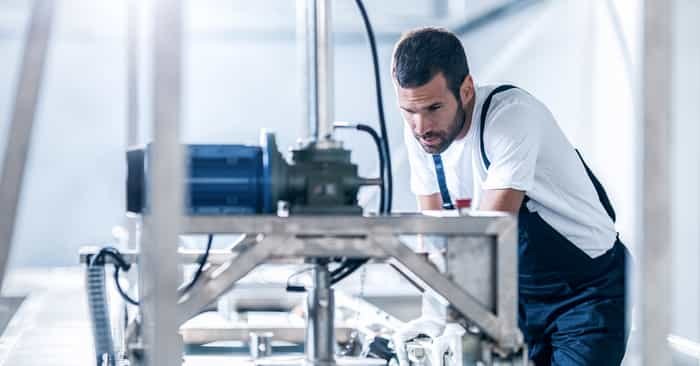2. Set Clear, Measurable Goals
Know what success looks like before you invest. Some common goals we see from warehouse leaders include:
- Reclaiming floor space to expand domestic production or inventory
- Reducing picking labor by 50% or more
- Shortening order cycle times to offset longer global lead times
- Improving inventory accuracy to 99.9%+
- Creating a more scalable operation that adapts to policy changes
Tie your ASRS investment directly to these goals. That alignment is key to executive buy-in and long-term ROI.
3. Choose the Right ASRS Technology for Your Needs
There’s no one-size-fits-all ASRS system. The right solution depends on your SKU profile, throughput, and available space.
Here’s a quick guide to help:
|
ASRS Type |
Best For |
|
High-density storage of mixed-size inventory; vertical optimization |
|
|
Fast picking of small, high-turnover items; ideal for order picking, buffering or kitting |
|
|
Dense, repetitive storage of similar-sized items; lower ceiling environments |
|
|
High-speed picking for large SKU volumes with similar sizes |
“Everyone’s talking about tariffs – and rightfully so – but we’ve already built around them. We’re excited to announce our new QuickShip program, which allows us to deliver standard Kardex Shuttle VLMs faster than ever—direct from our South Carolina plant. It’s all about giving our customers the speed and reliability they need, even in a volatile market. While other manufacturers are scrambling, we’re shipping.”
— Mark Dunaway, President – Americas at Kardex Remstar
Many companies start with one zone or product category, then scale across the operation as savings stack up.
4. Don’t Forget the Software
ASRS is only as powerful as the software that drives it. Pair your automation with robust inventory management software like Kardex Power Pick System to enable:
- Real-time inventory visibility and control
- Order batching and smart sequencing
- Automatic replenishment alerts
- Seamless integration with WMS, ERP, or MES systems
Software makes your ASRS smarter—and your team more efficient.

5. Plan a Phased Rollout to Minimize Disruption
Good news: You don’t have to shut down operations to install ASRS.
Most systems are modular and scalable, which means you can install them in stages:
- Start with one critical area (e.g., high-turnover parts or overseas-dependent SKUs)
- Train your core team and test workflows
- Scale up once you see results
This phased approach limits risk, speeds up ROI, and builds internal confidence.
6. Train Your Team for Adoption, Not Just Operation
The tech is powerful—but your people still make the difference.
Make sure operators are trained not just in how to use ASRS, but in how to embrace it. Focus on:
- Safe and efficient operation
- Troubleshooting basics
- Reading system alerts and dashboards
- Best practices for ergonomics and productivity
When your team feels confident, the adoption curve is faster—and smoother.
7. Track KPIs and Optimize Continuously
Once your ASRS is live, keep the momentum going by monitoring key performance indicators (KPIs) like:
- Picking accuracy and lines per hour
- Labor hours saved
- Space reclaimed
- Inventory turnover rate
- Time-to-ship metrics
Use this data to spot new automation opportunities, justify additional investment, and stay one step ahead of future tariff impacts.
Tariffs Today, Recession Tomorrow: How ASRS Helps You Prepare for Both
While the headlines focus on tariffs, the deeper concern for many warehouse managers is what comes next: a potential recession. The sweeping April 2025 tariff hikes didn’t just raise import costs—they sent shockwaves through global markets. The S&P 500 dropped 3.7%, European and Asian stock markets plunged, and oil prices sank by over $2 a barrel.
The real danger of tariffs isn’t just price increases—it’s the domino effect they can trigger:
- Decreased trade volumes
- Inflationary pressure on consumer goods
- Retaliatory tariffs from U.S. allies
- Higher operating costs with less revenue to offset them
That’s why forward-thinking warehouse leaders are looking beyond short-term tariff strategies and asking:
How do we build an operation that thrives during economic uncertainty?
The answer is automation.

How to Use Automation as a Recession Buffer
ASRS systems don’t just help you avoid tariff pain—they help you recession-proof your warehouse by stabilizing core cost drivers like labor, space, and inventory.
Here’s how:
Labor Volatility? No Problem.
Recessions often mean tighter hiring budgets, workforce instability, and unpredictable labor pools. But with ASRS, you can:
- Reduce labor needs by up to 66%
- Shift from manual picking to automated, goods-to-person workflows
- Run a lean core team with a flexible labor strategy, scaling up or down without sacrificing throughput
Rising Overhead? Reclaim Your Space.
Recessions pressure businesses to cut costs fast—but expanding warehouse space is costly and risky, especially in an uncertain economy. ASRS offers a smarter path:
- Free up to 85% of floor space
- Avoid major real estate investments or construction projects
- Repurpose admin or underutilized space for production, kitting, or fulfillment
As Mark Dunaway, President of Kardex Remstar North America, put it:
“In the face of economic uncertainty, you really don’t want to build or buy right now. ASRS lets you grow inside your existing footprint.”
Inventory Instability? Localize and Protect.
Both tariffs and recessions make international supply chains more fragile. Shifting from just-in-time (JIT) to just-in-case (JIC) inventory strategies is one way to stay protected—but that requires more space and smarter inventory control.
With ASRS:
- You can store more inventory in less space, without sacrificing accessibility
- Real-time tracking and integrated software reduce waste, shrinkage, and stockouts
- You’re better positioned to ride out supplier disruptions or delays
“Tariffs may hit raw materials today, but a recession could wipe out suppliers tomorrow. ASRS helps you stay ahead of both.” Cal Bowers, Sr. Director of New Business, North America at Kardex Remstar
Learn more about how automation can recession-proof your warehouse here.
Tariffs Are Unpredictable—Your Warehouse Doesn’t Have to Be
In today’s global climate, tariffs can change overnight. Your operation can’t afford to be reactive. By investing in warehouse automation—especially ASRS—you build a buffer against uncertainty and gain control over the variables that matter most: cost, speed, accuracy, and resilience.
“Automation isn’t just about efficiency anymore. It’s about control—over your space, your labor, your inventory, and your future."
— Christina Dube, Director of Marketing, Americas at Kardex
Whether you’re reshoring, optimizing for a recession, or simply bracing for whatever the next tariff round brings, ASRS positions your warehouse to handle it—without missing a beat.
Ready to talk about ASRS for your warehouse? Contact us today.








